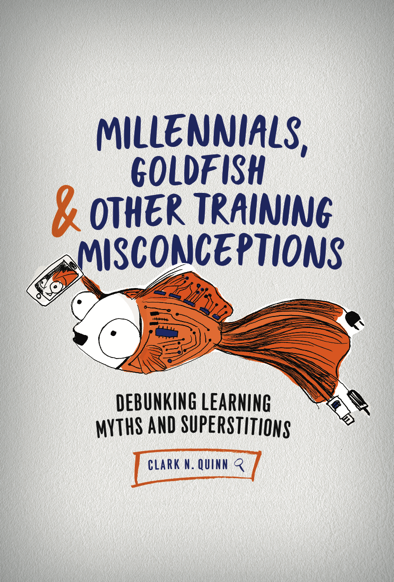Ok, so this may be small news, but it’s still news (and I, at least, am excited!). I’ve previously mentioned my forthcoming book: Millennials, Goldfish, and other Training Misconceptions: Debunking Learning Myths and Superstitions. It’s not out yet, though you can preorder. What I’m excited about is that I’ve now put up the site for the book.
OK, whoop de doo. I get it, yet another site. Still, it’s exciting for me for several reasons:
- a taster of the book is available for download (including Will Thalheimer’s intriguing Foreword)
- it’s illustrated with some images from the comics (one for every entry)
- you can download a list of the myths citations (at least the ones that actually debunk)
- you can download the list of the recommended readings
- there are links to all the mythbusters mentioned at the end
- of course there are links to where you can preorder
And, I kind of like the URL I was able to grab: debunkinglearningmyths.com.
So, I don’t expect you to get as excited as me, but I did feel I should at least let you know.


